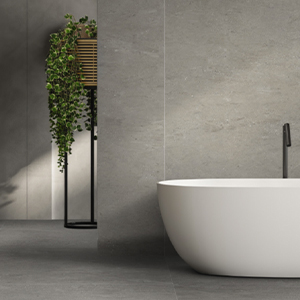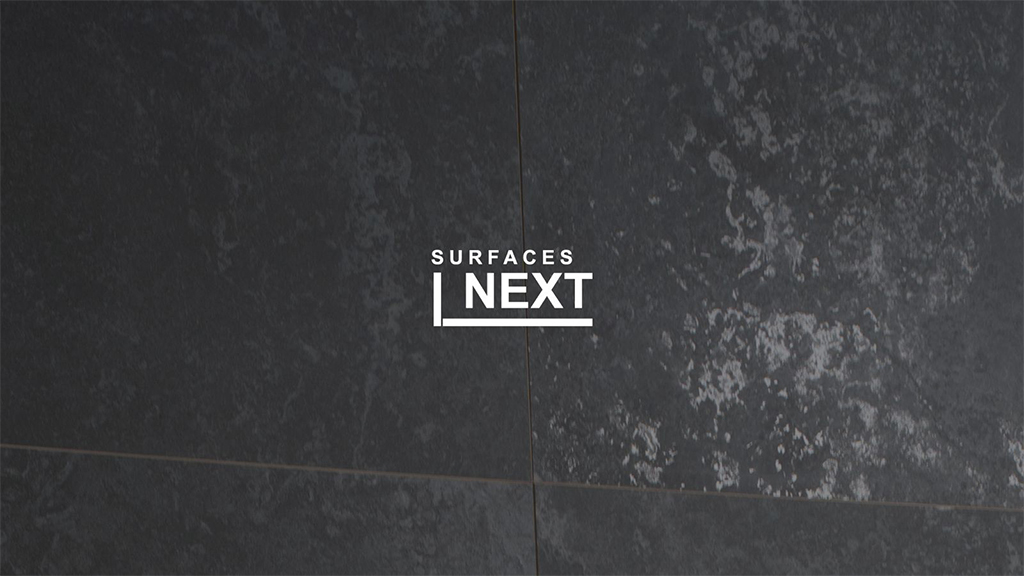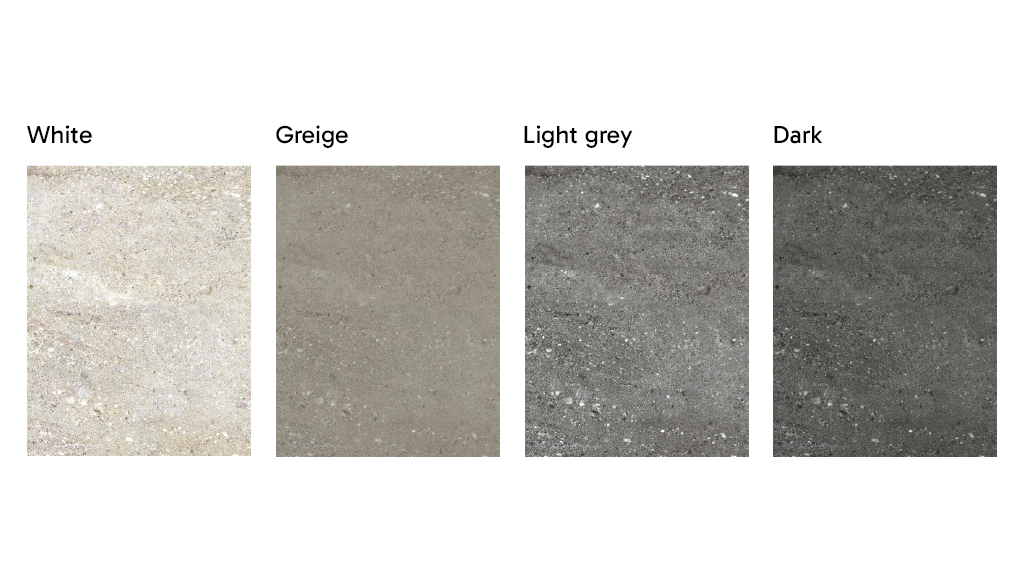Index
- Introduction
- What is a non-slip tile?
- Anti-slip regulations and certifications
- Advantages of non-slip tiles in the bathroom
- Most used materials for bathroom non-slip tiles
- Available designs and styles
- How to choose the right tiles
- Installation and maintenance
- FAQ – Frequently Asked Questions
- Conclusion
Introduction
The bathroom is one of the most slip-prone rooms in the home. Choosing slip-resistant tiles for bathrooms is therefore essential to ensure the safety of the whole family, without sacrificing aesthetics. In this guide you will discover how to combine functionality, style and resistance thanks to the best ceramic solutions available on the market. Discover all the collections of slip-resistant ceramic surfaces by Sicer.
What is a non-slip tile?
Non-slip tiles are surfaces designed to increase friction, reducing the risk of falls. They are distinguished by:
- Surface treatments (textured, chemical or abrasive)
- Rough or microstructured finishes
- Specific slip resistance classifications (e.g., R10, R11, etc.).
Did you know? An R10 tile is suitable for humid home environments such as the bathroom, offering an ideal balance between safety and comfort.
Anti-slip regulations and certifications
To assess the quality and safety of an anti-slip tile, there are certifications such as:
- DIN 51130: classifies the coefficient of friction for inclined surfaces.
- DIN 51097: specific for barefoot wet environments.
- R classification (R9-R13): the higher the number, the greater the adherence.
| Class | Level of adherence | Recommended environments |
| R9 | Low | Dry indoor environments |
| R10 | Medium | Domestic bathrooms |
| R11 | Medium-high | Showers, spa areas |
| R12-R13 | Very-high | Industrial areas, professional kitchens |
Advantages of non-slip tiles in the bathroom
Safety for all ages
The bathroom is among the most dangerous rooms in the home in terms of fall risk. Wet surfaces, combined with the presence of soaps, moisture and protruding objects, increase the danger, particularly for:
- Children, who move with spontaneity and speed are more prone to slipping.
- Older people, who may lose their balance more easily or have difficulty with movement as they age.
- People with disabilities or reduced mobility, for whom a fall can cause serious consequences.
Non-slip bathroom tiles offer a higher level of grip than traditional materials, greatly reducing the risk of household accidents. Class R10 or R11 is ideal for creating safe surfaces without sacrificing walking comfort. In addition, many modern collections are designed to feel pleasant even when barefoot, providing a safe and natural feel.
Useful statistics: according to the ISS (Istituto Superiore di Sanità), accidental falls account for about 20% of household accidents, and the bathroom is one of the most critical places. Prevention with safe flooring is the first form of protection.

Durability and strength
Non-slip tiles, particularly porcelain tiles, resist:
- Constant humidity
- Chemical agents
- Wear and tear from trampling
Ease of cleaning
A common belief is that non-slip tiles, having textured or micro-rough surfaces, are difficult to keep clean. But this is not the case, especially in the case of modern ceramic materials such as non-slip porcelain tile.
These products are designed to be:
- Waterproof, so they do not absorb water or soap residue.
- Resistant to mold and bacteria, even in the wettest areas such as the shower.
- Easy to wash: just use a damp cloth or soft brush with mild detergent.

Sicer, an Italian company active internationally in the production of innovative materials for ceramic decoration, has developed, with this in mind, the NEXT EXPERIENCE SURFACES line, an innovative solution that represents the evolution of material surfaces: a special mix of micro grits with very fine calibrated grain size, which guarantees totally matt, anti-reflective and easily cleaned surfaces, with high chemical resistance and anti-slip properties certified up to R12. The resulting vitrified surface is technical, pleasant to the touch and perfect for modern, safe bathroom environments.
Learn more about Next Experience Surfaces →
Even in the case of deeper textures, surfaces are designed to retain as little dirt as possible. In addition, some tiles include antibacterial or water-repellent treatments that further facilitate daily maintenance. Practical tip: To maintain non-slip performance over time, avoid polishing waxes or oily products that could make the surface more slippery. Always use neutral detergents and dry thoroughly after cleaning.
Most used materials for bathroom non-slip tiles
The choice of material is crucial to achieve effective, durable and aesthetically harmonious non-slip flooring with the style of the bathroom. Some of the most reliable and popular options include:
Non-slip porcelain gres
Porcelain tile is the most popular and recommended material for those seeking a technical and design solution at the same time. It is extremely compact, durable and can take on different finishes. It offers high resistance to wear, stains and temperature changes, and is ideal for those who want non-slip bathroom tiles with a modern or natural look.
Non-slip glazed ceramic
Glazed ceramic offers an excellent alternative for those seeking a more economical but still safe solution. Suitable for less-traveled areas of the bathroom, it provides good adhesion and elegant aesthetics.
Non-slip vinyl
Vinyl is a practical material that is easy to install and available in rolls or planks. Although it offers good adhesion, it has lower strength than ceramic materials and is not suitable for bathrooms with high humidity. It is a transitional solution or suitable for quick renovations.
Natural stone with non-slip finish
Ideal for those who want a refined and unique bathroom, natural slip-resistant stone is a high-end choice. However, it requires more maintenance and specific treatments to maintain its non-slip properties over time.
Available designs and styles
Modern slip-resistant tiles allow for endless aesthetic combinations that combine safety and sophistication. The Sicer collection offers solutions inspired by natural materials, the elegance of wood and urban minimalism, all of which are also available with slip-resistant finishes.

- Stone effect: reminiscent of natural surfaces and perfectly suited to rustic or spa-inspired bathrooms. Ideal for those who want a textured and warm look.
- Wood effect: perfect for creating a cozy, relaxing atmosphere while maintaining the technical advantages of ceramics. Pairs well with contemporary or Nordic furnishings. See Structure di Sicer
- Cement effect: ideal for industrial and modern environments. Gives character and restraint, perfect for those who like urban or minimalist style.
- Geometric and decorative patterns: give personality to any space. Great for shower walls or portions of floors that want to catch the eye.
Box Council Design
Use R10 non-slip tiles throughout the flooring and choose a decorative pattern for the shower area-you get safety and personality in one design gesture.
Check out our available designs and effects
How to choose the right tiles
Here are the key factors:
- Moisture level: the higher the exposure, the higher the R coefficient should be.
- Bathroom size: in small spaces, light colors and large sizes visually expand the room.
- Furniture style: choose textures and colors that complement sanitary ware and furniture.
- Budget: stoneware and ceramics offer solutions for all price ranges.
See our tips for choosing the ideal material.
Installation and maintenance
Proper installation and consistent maintenance are critical to ensure the durability, aesthetics, and functionality of slip-resistant tiles over time. Here are the most important steps and cautions:
Surface preparation
Before laying, it is essential to check that the screed or subfloor is:
- Perfectly level: any incorrect slope can compromise drainage and safety.
- Clean and dry: remove dust, cement residue and traces of moisture.
- Solid and firm: the surface should be free of cracks or fissures.
It is advisable to apply an adhesion primer to improve the adhesion of the cementitious adhesive, especially in high-humidity environments such as the bathroom.
Laying techniques
For the installation of non-slip tiles, it is recommended:
- The use of specific improved cement-based adhesives (type C2 according to EN 12004), which are ideal for porcelain tile or low absorption surfaces.
- The application of the double-spreading technique (both on the back of the tile and on the substrate) to avoid air gaps.
- The control of minimum slopes near the shower or drainage points (at least 1-2% to ensure water runoff).
- Compliance with regular joints (at least 2 mm) to be grouted with water-repellent, mold-resistant epoxy or cement mortars.
Proper installation ensures that the non-slip properties are maintained over time and that water accumulation or hazardous areas are not created.
Daily cleaning and care
Use neutral cleaners, avoid oily products. For textured tiles, prefer soft brushes and pressure washers
Read our insights on the maintenance of ceramic surfaces
FAQ – Frequently Asked Questions
The best are non-slip porcelain tiles, class R10 or R11, for safety and style.
It indicates good adhesion on sloping surfaces, ideal for humid home environments.
No, if properly treated and cleaned with suitable products.
Yes, especially if they have DIN 51097 classification for barefoot environments.
Conclusion
Choosing slip-resistant bathroom tiles does not mean giving up on design. Sicer, a benchmark in the production of ceramic wall tile materials for more than 30 years, develops advanced technologies designed to improve the aesthetic and functional performance of ceramic surfaces. Thanks to solutions such as NEXT EXPERIENCE SURFACES, tile manufacturers can create beautiful, safe, technical and easy-to-clean surfaces that are also ideal for the bathroom environment.







